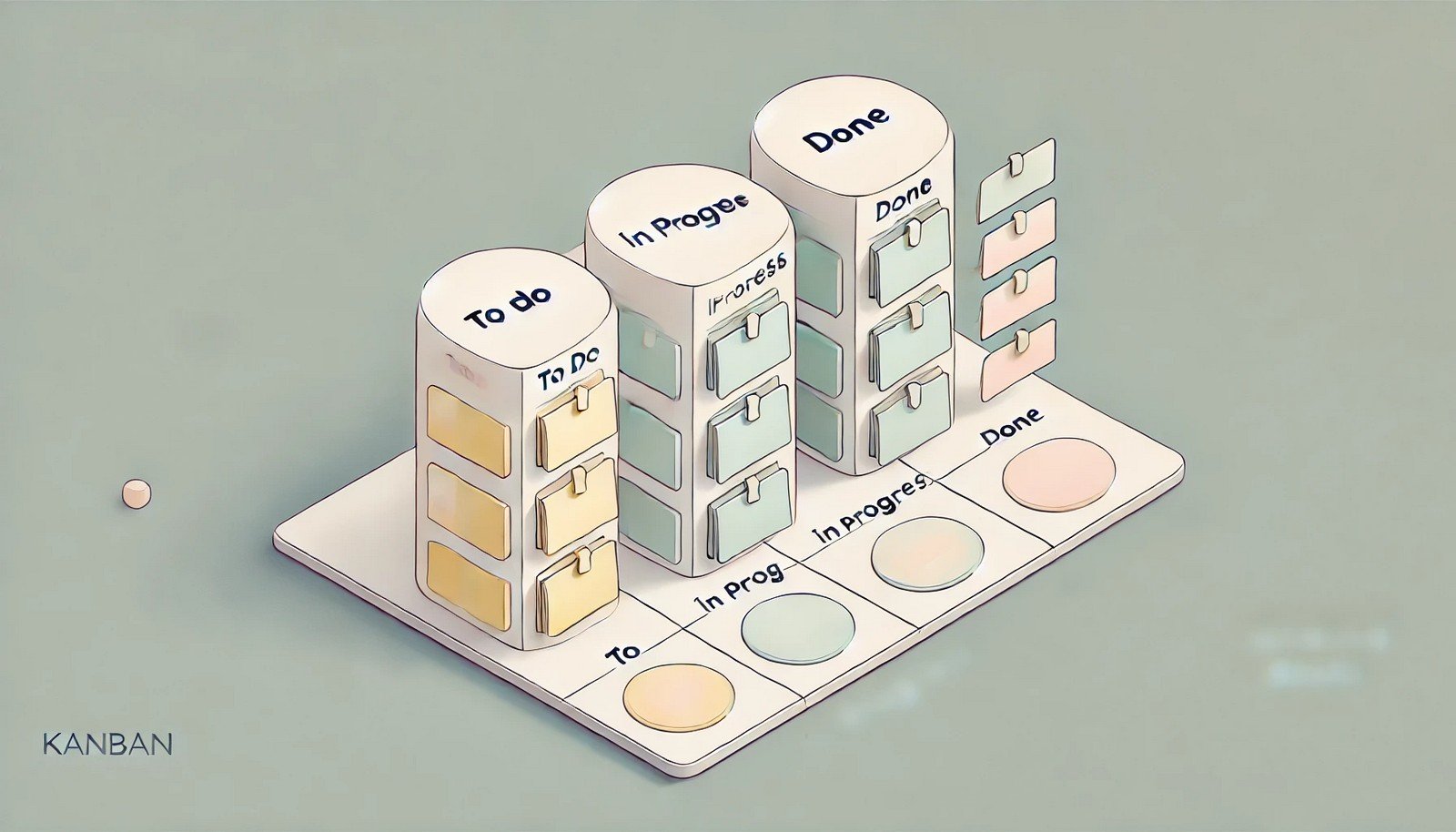Kanban

Representational Image
Quick Navigation:
- Kanban Definition
- Kanban Explained Easy
- Kanban Origin
- Kanban Etymology
- Kanban Usage Trends
- Kanban Usage
- Kanban Examples in Context
- Kanban FAQ
- Kanban Related Words
Kanban Definition
Kanban is a method for managing workflows and improving efficiency, primarily used in manufacturing and software development. Originating from Japan, it uses visual boards with columns and cards to represent work items and their progress through different stages. Key principles of Kanban include visualizing workflows, limiting work in progress (WIP), and enhancing flow. It is widely employed in agile project management and lean methodologies to increase productivity and deliver value efficiently.
Kanban Explained Easy
Imagine you're organizing toys. You set up boxes for "toys to play with," "toys to clean," and "toys to put away." Each time you pick up a toy, you decide which box it belongs in, and the toys move through the boxes until they're all put away. Kanban works the same way, except it’s for managing tasks or projects instead of toys.
Kanban Origin
Kanban originated in Japan at Toyota in the 1940s as a scheduling system for lean manufacturing. It aimed to improve efficiency by visualizing workflows and reducing bottlenecks, which later inspired adaptations in various industries worldwide.
Kanban Etymology
The term “Kanban” is derived from the Japanese words "kan," meaning visual, and "ban," meaning card or board.
Kanban Usage Trends
Kanban has grown beyond manufacturing and is now a staple in software development, healthcare, and education. Its integration with agile practices makes it a preferred method for project management. With the rise of remote work, digital Kanban boards like Trello and Jira have become popular for their accessibility and flexibility.
Kanban Usage
- Formal/Technical Tagging:
- Lean Management
- Workflow Optimization
- Agile Methodologies - Typical Collocations:
- "Kanban board"
- "work in progress limit"
- "Kanban workflow"
- "Kanban for software development"
Kanban Examples in Context
- A software development team uses a Kanban board to track tasks, moving cards from "To Do" to "In Progress" to "Done."
- A hospital employs Kanban to streamline patient admissions, ensuring no step is missed in the treatment process.
- A teacher organizes lesson planning with Kanban, tracking preparation, delivery, and review phases.
Kanban FAQ
- What is Kanban?
Kanban is a workflow management method that uses visual boards to improve task organization and efficiency. - Where did Kanban originate?
Kanban was first implemented at Toyota as a lean manufacturing tool. - How is Kanban used in software development?
Teams use Kanban to visualize tasks, track progress, and manage workload through boards with cards. - What is the purpose of WIP limits in Kanban?
WIP limits control the number of tasks in progress, preventing overload and ensuring smooth workflows. - Can Kanban be used outside of manufacturing?
Yes, Kanban is used in software, healthcare, education, and personal productivity. - What are digital Kanban boards?
Digital boards like Trello and Jira replicate physical Kanban boards online, adding features for collaboration and reporting. - How does Kanban relate to agile?
Kanban aligns with agile principles by promoting iterative workflows and continuous improvement. - What’s the difference between Kanban and Scrum?
Kanban is a continuous flow system, while Scrum is an iterative, sprint-based framework. - How does Kanban improve productivity?
By visualizing workflows, limiting multitasking, and addressing bottlenecks, Kanban enhances efficiency. - Is training required to use Kanban?
While formal training isn’t necessary, understanding its principles can maximize its benefits.
Kanban Related Words
- Categories/Topics:
- Lean Manufacturing
- Agile Project Management
- Workflow Management
Did you know?
Kanban's simplicity makes it versatile, but it started as a simple idea at Toyota when engineers observed grocery stores restocking shelves only when products were needed. This "just-in-time" inspiration became a cornerstone of lean manufacturing.
PicDictionary.com is an online dictionary in pictures. If you have questions or suggestions, please reach out to us on WhatsApp or Twitter.Authors | Arjun Vishnu | @ArjunAndVishnu

I am Vishnu. I like AI, Linux, Single Board Computers, and Cloud Computing. I create the web & video content, and I also write for popular websites.
My younger brother, Arjun handles image & video editing. Together, we run a YouTube Channel that's focused on reviewing gadgets and explaining technology.



Comments powered by CComment